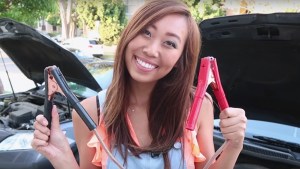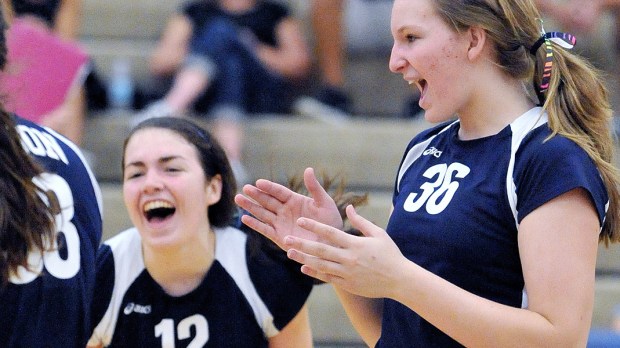Girls are notorious for being vicious toward each other, especially in their teenage years. Many initiatives have been launched to help foster a better culture among teen girls, but according to the Washington Post, good old-fashioned healthy competition is still one of the most effective ways for girls to learn to build each other up instead of tearing each other down:
Girls often struggle with healthy aggression, but competition helps people accomplish goals they otherwise wouldn’t complete. Being competitive and supporting others aren’t mutually exclusive ideas. “We’ve been so militant about getting girls to be nice, they don’t even know there’s such a thing as healthy competition,” says psychologist Lisa Damour, the author of Untangled.When Marina Passalaris, the founder of Beautiful Minds in Australia, conducts confidence-building workshops for girls, she emphasizes that you can be a good person with goals without harming anyone. “Socially, we have this weird idea that a nice girl is quiet and submissive and doesn’t chase her dreams,” she said. You can bring fierceness to competitive situations, then return to being a good sport and friend. Damour points to Mulan as a good example. Eckstein, the voice of Ahsoka Tano in animated Star Wars shows, refers to Hera and Sabine, powerful female characters in that universe. “They’re part of a crew who work together to overcome the empire,” Eckstein said. “They’re girls working together, overcoming, doing great things.”
The truth is, there’s only so much we can do as parents to help convince our daughters to build up their peers. The teen girl culture has a deeply engrained “mean girl” mentality, and most girls alternate between being the victim and being the villain. I know, because I lived that in my teenage years and I’m watching my oldest daughter Sienna live it now. Which is one of the reasons I’m grateful that she’s entered the world of team sports.
The dynamics of a sports team are significantly different from the dynamic she was used to in taekwondo. Even though our taekwondo school trained and went to sparring competitions as a team, it was still an individual sport. The match was won or lost on the effort and skill of the individual, so win or lose, there was no one to blame. But there was also no one to rely on or learn to work with, which made for a high pressure, highly competitive environment.
Naturally, Sienna struggled to make the transition from “me vs. you” to “us vs. them.” She came home from volleyball practices those first few weeks full of details about how she performed in relation to her teammates, rather than skills she was learning or improvements she was seeing in herself. I tried to get her to shift her mentality, but she listened to me about as well as most 13-year-olds listen to their mothers. She wasn’t the only girl on her team to struggle those first few weeks, though, and they lost their first few games because they looked less like a team and more like five girls fighting to be the first to hit the volleyball.
It took nearly a month for them to begin to come together as a team, but when it happened it was like a flip switched. And all it took was winning their first set. The near-euphoria and the tantalizing possibility of winning the entire game suddenly refocused their competitive drive away from each other and toward the other team–suddenly, they were working with each other. And in doing so, they won the game.
That one moment on the court was all it took for those girls to begin supporting each other, on the court and off. One jolt of healthy competition, focused in the right direction, transformed them into a team that practiced together, played together, did homework together, supported each other, encouraged each other, celebrated victory together and (most importantly) suffered defeat together, without blaming or shaming.
It wasn’t a magic bullet, of course — nothing is. But it was a powerful lesson that they will carry with them as they grow up, and hopefully it will be one that will help them grow in virtue and charity.

Read more:
Want to know how to fix your own car? Ask a girl

